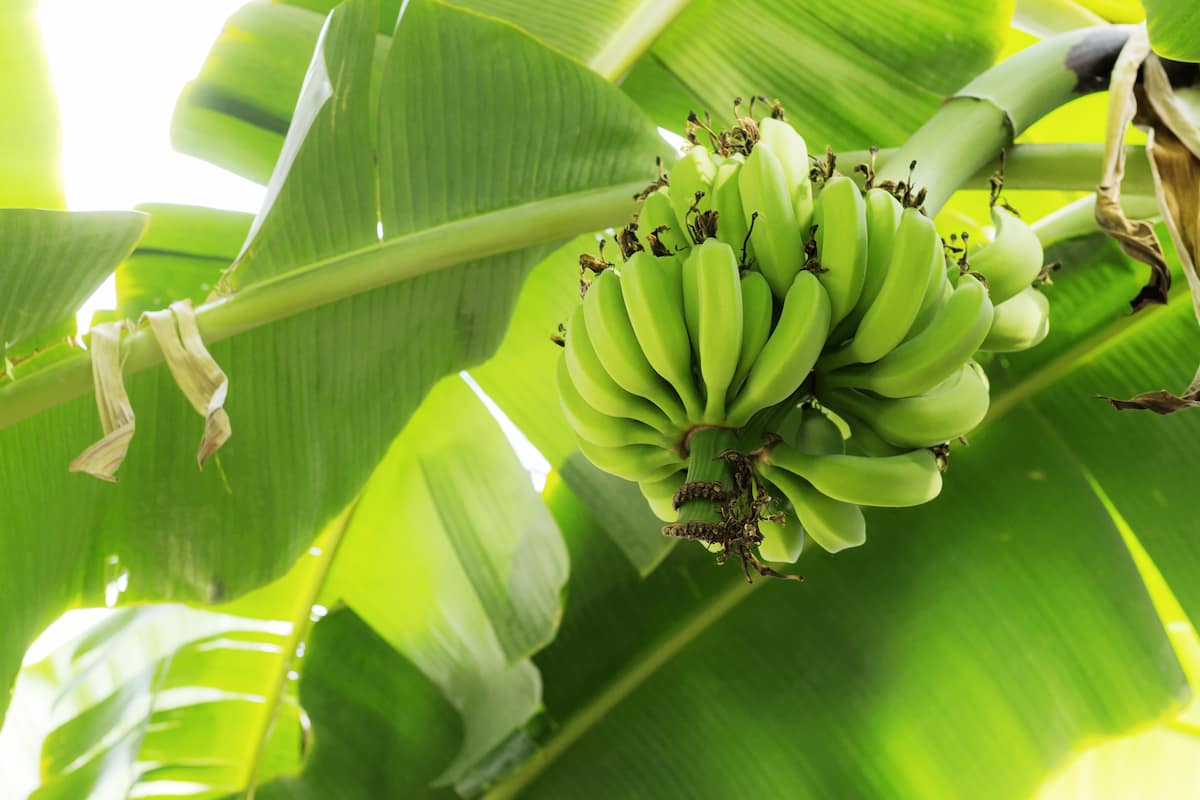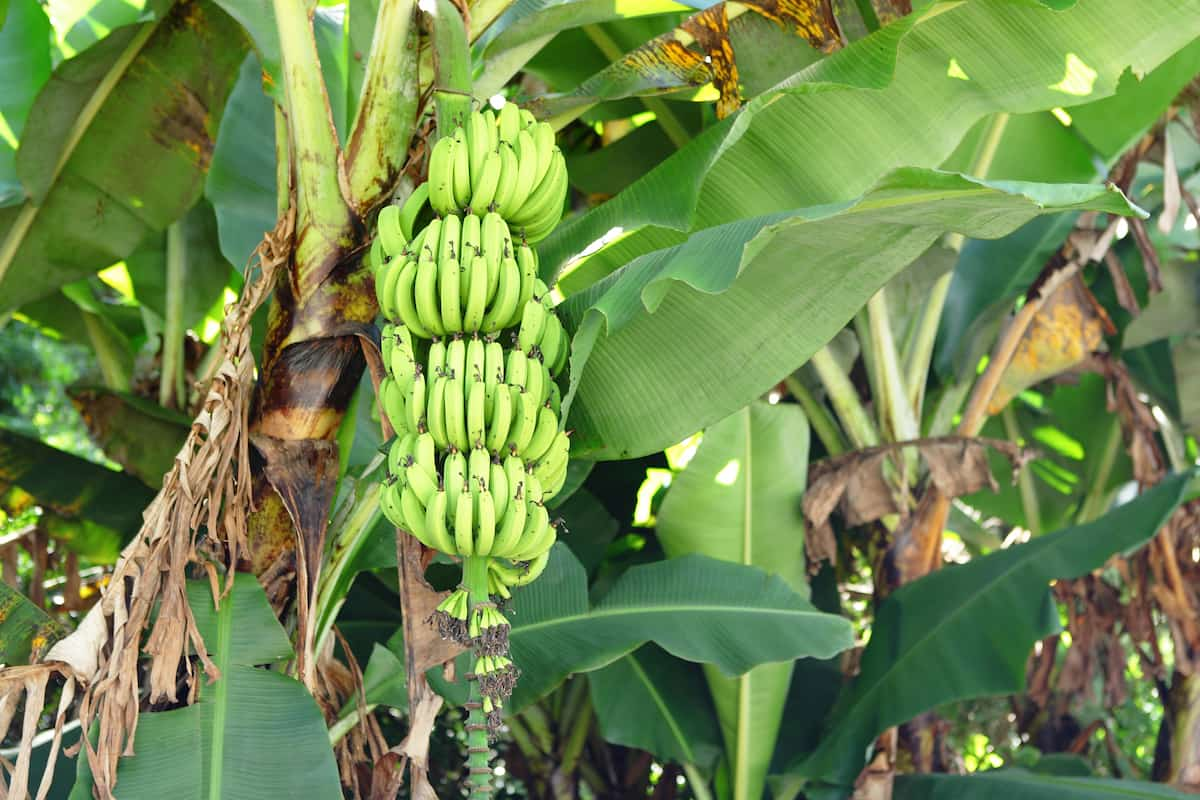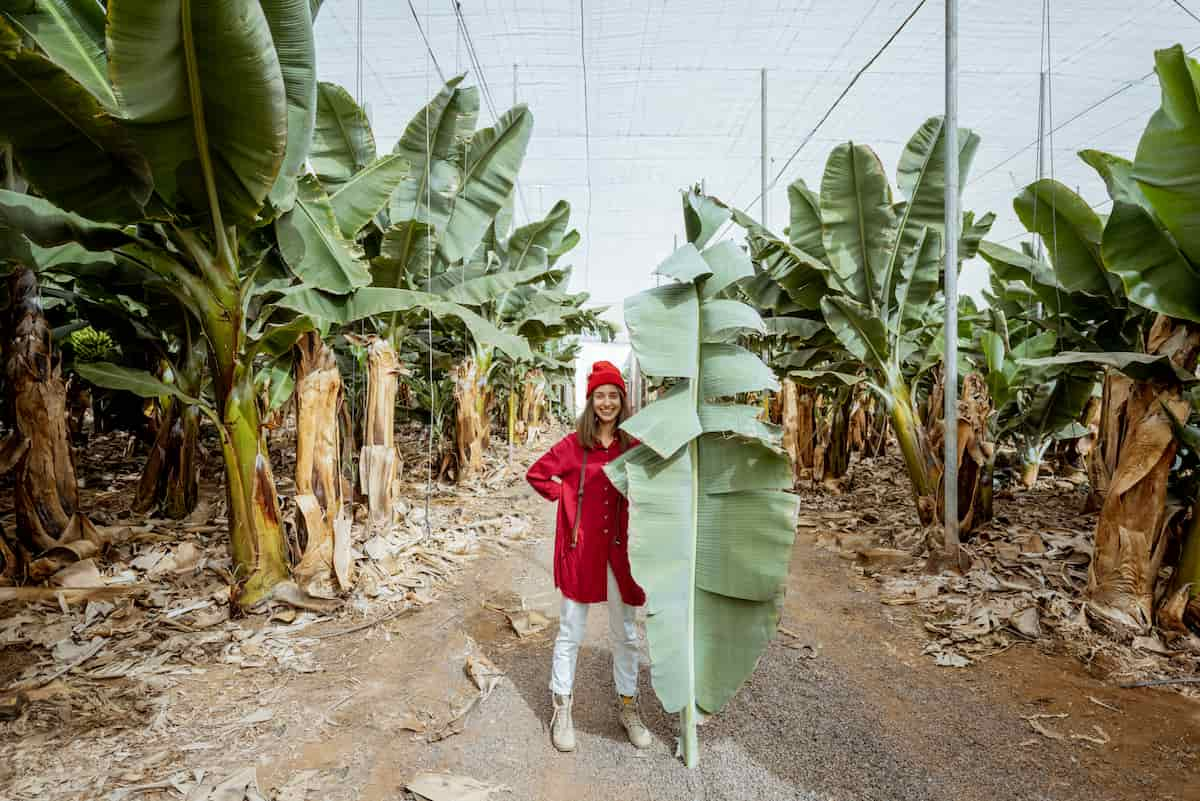The Banana Lacewing Bug, Stephanitis typicus, belonging to the Family Tingidae of the Order Hemiptera, is a serious pest of banana plants worldwide. This insect feeds on the sap of banana leaves, causing significant damage that can lead to reduced crop yield and quality. The Banana Lacewing Bug is native to Southeast Asia. The Banana Lacewing Bug can also transmit viral diseases to banana plants that can be facilitated by the insect’s feeding activity, as well as by its mobility and ability to disperse quickly.

Effective management strategies are essential to mitigate the damage caused by this pest. To effectively manage this pest, it is essential to understand its life cycle, its preferred habitats, and the best methods for controlling it. This article will provide an overview and discussion of the Banana Lacewing Bug Pest in Banana crops, including its symptoms, identification techniques, and control.
Banana Lacewing Bug Pest Management
Life Cycle of Banana Lacewing Bug Pest in Banana Crop
The female Banana Lacewing Bug lays eggs on the undersides of banana leaves, usually in groups of 2 to 8 eggs. The incubation lasts about 7 to 10 days, after which the eggs hatch into the larval stage. The larvae feed on the sap of the banana leaves, causing damage to the plant. The larval stage lasts about 3 to 4 weeks, during which the larvae molt several times as they grow. After the larval stage, the Banana Lacewing Bug enters the pupal stage.
The pupa is enclosed in a cocoon made of silk and debris from the banana leaves. The pupal stage lasts 7 to 10 days, during which the insect undergoes metamorphosis and develops into its adult form. The adult Banana Lacewing Bug emerges from the cocoon with fully developed wings and characteristic lace-like patterns. The adult female Banana Lacewing Bug can lay up to 200 eggs during her lifetime, lasting about 2 to 3 months.
In warmer climates, the insect can complete its lifecycle in as little as 30 days, while in cooler climates, it can take up to 60 days.
Occurrence of Banana Lacewing Bug Pest in Banana Crop
- Location of Banana Lacewing Bug pest: This pest infests Banana crops in India, Africa, Sri Lanka, China, Thailand, Vietnam, Indonesia, the United States, Mexico, Brazil, Colombia, Ecuador, the Philippines, and Australia.
- Host range: The Banana Lacewing Bug pest infects crops like Bananas, Mango, Papaya, Avocado, Citrus, Cardamom, Ginger, Turmeric, and Jasmine.
Factors Favoring the Population Increase of Banana Lacewing Bug Pest in Banana Crop
- The pest prefers warm temperatures between 25°C to 30°C to reproduce and develop.
- The pest prefers high humidity levels between 70% to 80% to survive and reproduce. High rainfall causes the pest’s eggs to hatch faster, allowing for the more rapid growth of the pest population.
- The pest’s larvae can feed on the roots of banana plants, often found in moist soil conditions. Over-watering crops can create conditions that favor the growth and development of the pest.
- The absence of natural enemies such as predators and parasites can also contribute to Banana Lacewing Bug infestation in banana crops.
Identification of Banana Lacewing Bug Pest in Banana Crop
- Egg: The eggs are oval-shaped and have a pale yellow or white coloration.
- Larva: The larvae are small, have a flattened, oval-shaped body, and are pale green with black markings on their back.
- Adult: The adult Banana Lacewing Bug is small, about 3-5 mm long, with a characteristic lace-like pattern on its wings and piercing and sucking mouthparts.
Damage Symptoms of Banana Lacewing Bug Pest in Banana Crop
- The bugs feed on the sap of the lower side of banana leaves and cause discoloration of the leaves.
- The larvae drill into the plant’s rhizome making dark tunnels and leading to the plant’s death.
- The pest can cause a spotted appearance on the foliage of the plants.
- The feeding activity of the pest can cause the leaves to turn yellow, curl, and eventually die, reducing the plant’s photosynthetic capacity and impacting its growth and productivity.
In case you missed it: Banana Rhizome Weevil Pest Management: Symptoms, Treatment, Chemical, Biological, Natural, and Organic Control

Percentage of Yield Loss in Bananas due to Banana Lacewing Bug Pest
- In India, the yield losses due to Banana Lacewing Bug pests are 15-60%. In Thailand, the percentage of yield loss is 10-50%. In Vietnam, the losses are 10-40%. In Sri Lanka, the losses are 5-60%. In Indonesia, the losses are 5-40%. In Africa, it is 20-50%. In the United States, it is 5-20%. In Mexico, it is 5-30%. In Brazil, it is 10-50%. In China, it is 20-40%.
- In Colombia, the losses are 10-60%. In Ecuador, it is 10-50%. In Australia, it is 5-30%. In the Philippines, the yield losses are 10-50%. The Economic Threshold Level (ETL) for the Banana Lacewing Bug pest is set at 4-5 adult bugs per plant at the flowering stage and 7-8 adult bugs per plant at the fruiting stage.
Cultural Control of Banana Lacewing Bug Pest in Banana Crop
- Rotating the banana crop with other non-host crops can help reduce the population of the banana lacewing bug by eliminating its alternate hosts and habitats, which can help manage the pest.
- Maintaining soil fertility and moisture levels can help reduce the pest population by creating an environment less conducive to survival.
- Use yellow sticky traps in the field to attract and trap the bugs.
- Pruning and sanitation of the pest’s damaged leaves, fruits, flowers, and life stages and regular disinfecting of pruning tools and equipment can help prevent the build-up of pest populations.
Biological Control of Banana Lacewing Bug Pest in Banana Crop
- Predatory insects such as ladybugs, lacewings, and spiders are natural enemies of the banana lacewing bug.
- Parasitoids such as Anagrus spp lay their eggs on the banana lacewing bug. The eggs hatch into larvae and feed on the banana lacewing bug, eventually killing it.
- Entomopathogenic fungi such as Beauveria bassiana and Metarhizium anisopliae can also manage the banana lacewing bug.
Chemical Control of Banana Lacewing Bug Pest in Banana Crop
- Spray insecticides on the crops like Methyl Demeton, Carbendazim, Quinalphos, Monocrotophos, or Dimethoate on the foliage to control the pest.
- Applying press mud to the trees will reduce wilting in the crop.
Organic Control of Banana Lacewing Bug Pest in Banana Crop
- Plant extracts from neem, garlic, cinnamon, ginger, turmeric, and chili can be applied to manage the infestation.
- Neem oil will help repel the pest and improve the plants’ health.
- Garlic extract will boost the plant’s immune system, making it less susceptible to pest and disease infestations.
- The cinnamon extract can help stimulate the plant’s growth and development.
- Essential oils like tea tree oil can help to improve the plant’s resistance to pests and diseases, while citrus oil helps to repel pests and improve plant health.
- Soap sprays are natural insecticides that can control Lacewing Bugs by dehydrating them.
Preventive Measures for Control of Banana Lacewing Bug Pest in Banana Crop
- Planting resistant varieties can prevent pest incidence.
- Monitor the crops regularly by visual inspection or by pheromone traps to identify pest infestation in the early stages to keep it under control.
- Planting barrier plants around the banana plantation, such as marigolds, chrysanthemums, and sunflowers, can repel the pest and prevent its spread to the banana crop.
- Avoid over-fertilization and over-irrigation, as they can weaken the plant’s immune system and make it more susceptible to pest attacks.
In case you missed it: Banana Pseudostem Borer Pest Management: Symptoms, Treatment, Chemical, Biological, Natural, and Organic Control

Conclusion
The Banana Lacewing Bug Pest, Stephanitis typicus, is a significant pest that causes huge damage to banana crops globally. Managing the Banana Lacewing Bug Pest requires a comprehensive and integrated approach. Effective control measures should be implemented in a sustainable and environmentally friendly manner to minimize the impact of the pest on the banana crop.
- Beneficial Insects in Pest Management
- Natural Solutions for Pest Control in Flower Gardens
- Types of Fungicides Used in Agriculture
- Common Issues in the Fruit Development Stage of Pomegranate Farming
- Fruit Development Issues in Papaya: Easy Solutions and Treatment
- Soil-Borne Diseases and How to Protect Your Plants
- Practices to Prevent Disease Spread in the Garden
- From Wilted to Thriving: How to Treat Root Rot Naturally in Houseplants
- Natural Remedies to Cure Brown Spots on Fig Tree Leaves
What is the source on distribution outside of SE Asia?